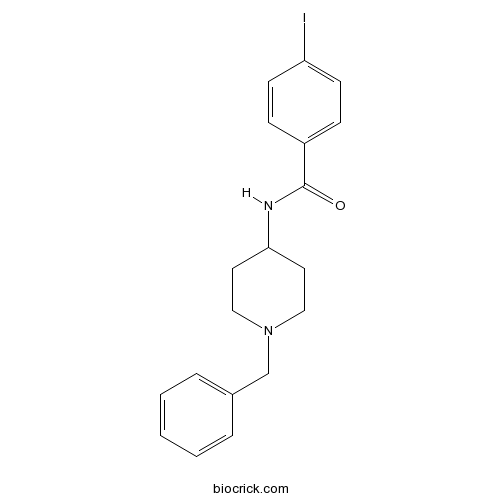GPCR/G protein
G protein–coupled receptors (GPCRs) which are also known as seven-transmembrane domain receptors, 7TM receptors, heptahelical receptors, serpentine receptor, and G protein–linked receptors (GPLR), constitute a large protein family of receptors, that detect molecules outside the cell and activate internal signal transduction pathways and, ultimately, cellular responses. Coupling with G proteins, they are called seven-transmembrane receptors because they pass through the cell membrane seven times.
Products for GPCR/G protein
- GIP Receptor(2)
- FFAR1 (GPR40)(7)
- 5-HT Receptor(238)
- Urotensin-II Receptor(10)
- CCK2 Receptors(7)
- P2Y Receptor(25)
- EP4 Receptor(3)
- CRF1 Receptors(6)
- Melatonin Receptors(9)
- LPL Receptor(1)
- Adenosine Receptor(54)
- VIP Receptors(7)
- OX Receptor(15)
- Chemokine Receptors(16)
- Neurotensin Receptors(7)
- Prostanoid Receptors(21)
- CCK1 Receptors(5)
- Adrenergic Receptor(136)
- GPR119(5)
- Calcium-Sensing Receptor(3)
- Cannabinoid Receptor(36)
- Angiotensin Receptor(21)
- GPR120(2)
- Protease-Activated Receptors(9)
- PAF Receptors(3)
- Sigma Receptor(24)
- NK3 Receptor(6)
- NPY Receptors(23)
- Glucagon Receptor(16)
- Leukotriene Receptor(9)
- Bombesin Receptors(14)
- Sphingosine(14)
- CXCR(16)
- NOP Receptor(21)
- GPR55(5)
- Galanin Receptors(11)
- Endothelin Receptor(11)
- GPR35(7)
- Glucocorticoid Receptor(17)
- Calcitonin and Related Receptors(10)
- Bradykinin Receptors(12)
- mGluR(11)
- Adenosine Kinase(2)
- GPR109A(2)
- GPCR19(1)
- Non-selective CRF(7)
- LTD4 Receptor(1)
- Secretin Receptors(1)
- Melanocortin (MC) Receptors(16)
- ETB Receptors(5)
- NK2 Receptors(7)
- LPA Receptor(5)
- S1P receptor inhibitor(5)
- CCR2(5)
- Hydroxycarboxylic Acid Receptors(5)
- PACAP Receptors(3)
- Melanin-concentrating Hormone Receptors(7)
- Vasopressin Receptor(10)
- Somatostatin Receptor(15)
- TSH Receptor(1)
- Peptide Receptors(8)
- Ghrelin Receptors(9)
- ETA Receptors(3)
- Orphan 7-TM Receptors(6)
- Oxytocin Receptors(4)
- Ras(6)
- Heterotrimeric(1)
- CysLT1 receptor(1)
- Motilin Receptor(4)
- Acetylcholine(3)
- Prostaglandin Receptor(4)
- GHSR(4)
- EBI2/GPR183(1)
- Gonadotropin-Releasing Hormone Receptors(3)
- Orexin(3)
- Apelin Receptor(5)
- CRF2 Receptors(3)
- Calcimimetic Agent(2)
- Adrenergic Transporters(5)
- CaSR(3)
- EP1 Receptor(1)
- Sensory Neuron-Specific Receptors(1)
- 17,20-lyase(3)
- Adenosine Deaminase(3)
- NK Receptor(1)
- PGD2 Receptor(1)
- GLUT1(1)
- RGS(2)
- GPR44(1)
- Adiponectin Receptor(1)
- ERRγ(1)
- Cat.No. Product Name Information
-
BCC6962
PACAP 1-38
PACAP (1-38), human, ovine, rat is a neuropeptide with 38 amino acid residues. PACAP (1-38) binds to PACAP type I receptor, PACAP type II receptor VIP1, and PACAP type II receptor VIP2 with IC50s of 4 nM, 2 nM, and 1 nM, respectively.

-
BCC7490
Alprenolol hydrochloride
Alprenolol (hydrochloride) is a non-selective beta blocker as well as 5-HT1A receptor antagonist.

-
BCC6286
BETP
BETP is an agonist of glucagon-like peptide-1 (GLP-1) receptor, with EC50s of 0.66 and 0.755 μM for human and rat GLP-1 receptor, respectively.
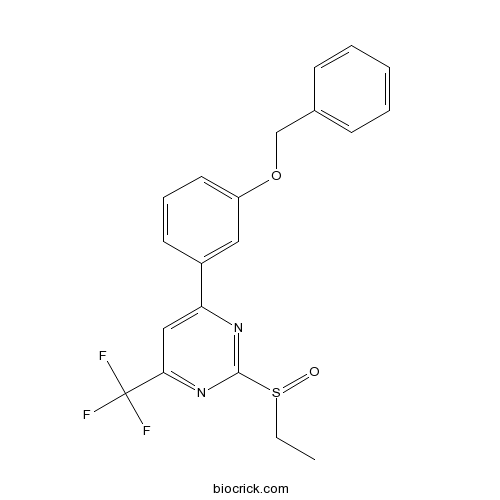
-
BCC7101
LY 215840

-
BCC6235
TUG 891
TUG-891is a potent and selective agonist for the long chain free fatty acid (LCFA) receptor 4 (FFA4/GPR120).

-
BCC5994
[Lys5,MeLeu9,Nle10]-NKA(4-10)
![[Lys5,MeLeu9,Nle10]-NKA(4-10)](/media/images/struct/BCC5994.png)
-
BCC5800
GR 64349
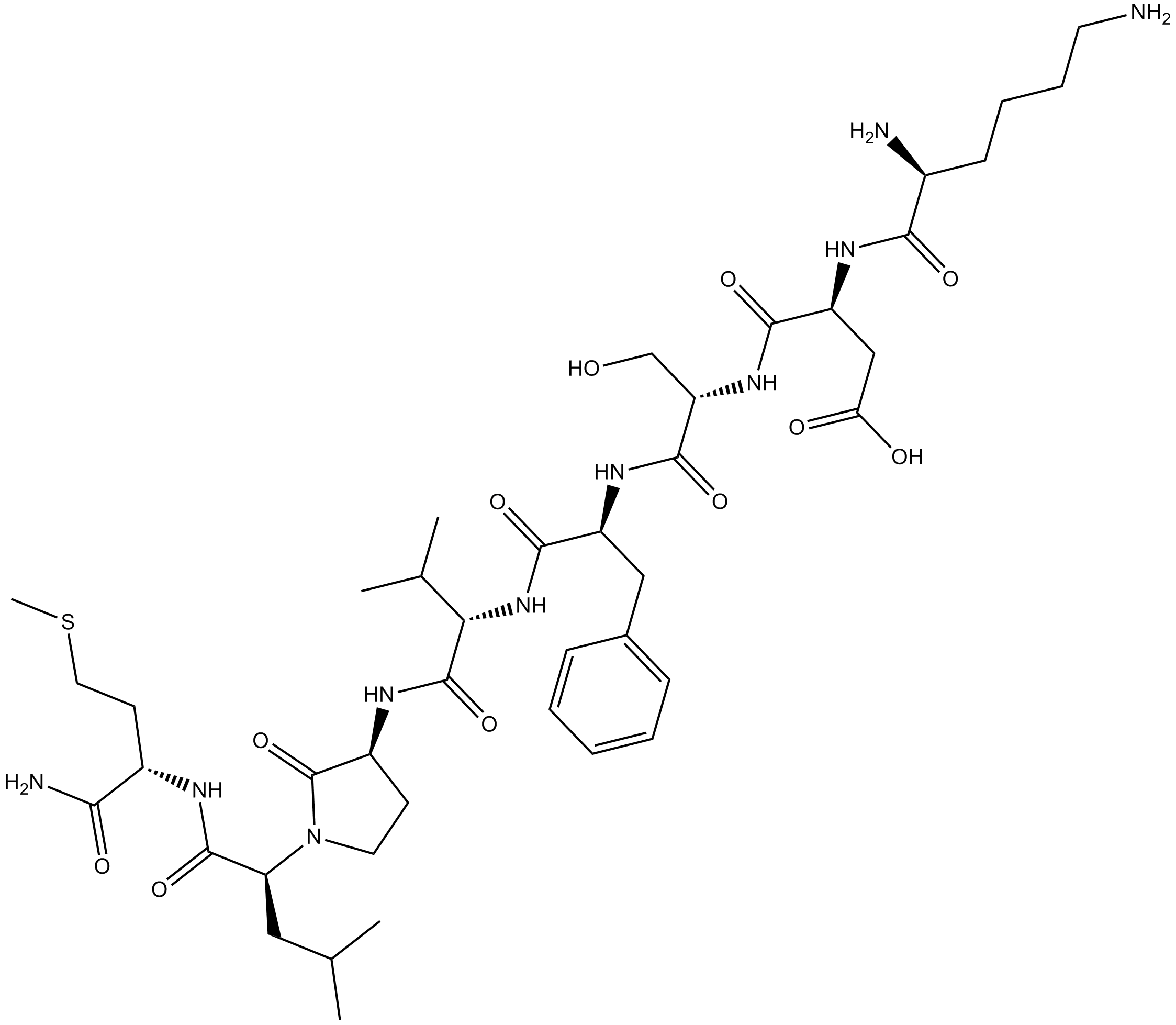
-
BCC5933
BIM 187

-
BCC5017
Valsartan
Valsartan (CGP-48933) is an angiotensin II receptor antagonist for the treatment of high blood pressure and heart failure.

-
BCC5095
Mozavaptan
Mozavaptan (OPC-31260) is a benzazepine derivative and a potent, selective, competitive and orally active vasopressin V2 receptor antagonist with an IC50 of 14 nM. Mozavaptan shows ~85-fold selectivity for V2 receptor over V1 receptor (IC50 of 1.2 μM), and can antagonize the antidiuretic action of arginine vasopressin (AVP) in vivo. Mozavaptan has the potential for hyponatremia, syndrome of inappropriate antidiuretic hormone (SIADH), and congestive heart failure treatment.

-
BCC6238
CYM 9484
CYM 9484 is a selective and highly potent neuropeptide Y (NPY) Y2 receptor antagonist with an IC50 value of 19 nM.

-
BCC6674
BD 1008 dihydrobromide

-
BCC6863
BD 1047 dihydrobromide
BD-1047 (dihydrobromide) is a selective functional antagonist of sigma-1 receptor, shows antipsychotic activity in animal models predictive of efficacy in schizophrenia.

-
BCC2560
Irbesartan
Irbesartan is a highly potent and specific angiotensin II type 1 (AT1) receptor antagonist with IC50 of 1.3 nM.

-
BCC6266
LP 20 hydrochloride

-
BCC5863
JMV 449

-
BCC6726
2-PMDQ

-
BCC6902
ZM 241385
ZM241385 is a potent, high affinity and selective adenosine A2a receptor (A2AR) antagonist with a Ki value of 1.4 nM.

-
BCC7877
MDL 100907
Volinanserin is a potent and selective antagonist of 5-HT2 receptor, with a Ki of 0.36 nM, and shows 300-fold selectivity for 5-HT2 receptor over 5-HT1c, alpha-1 and DA D2 receptors. Volinanserin has antipsychotic activity.

-
BCC1840
PB-22

-
BCC2018
TUG-770
TUG-770 is a highly potent free fatty acid receptor 1 (FFA1/GPR40) agonist with EC50 of 6 nM for hFFA1.
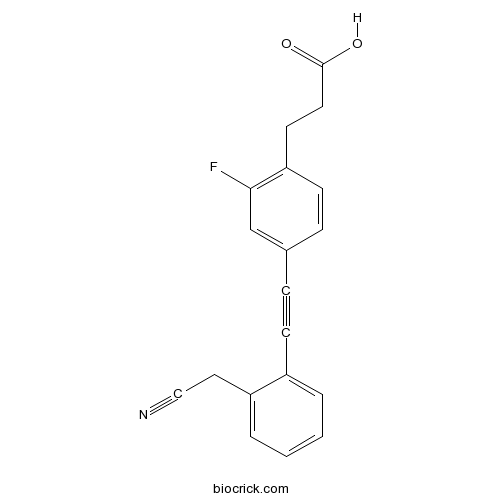
-
BCC5688
ICI 215,001 hydrochloride
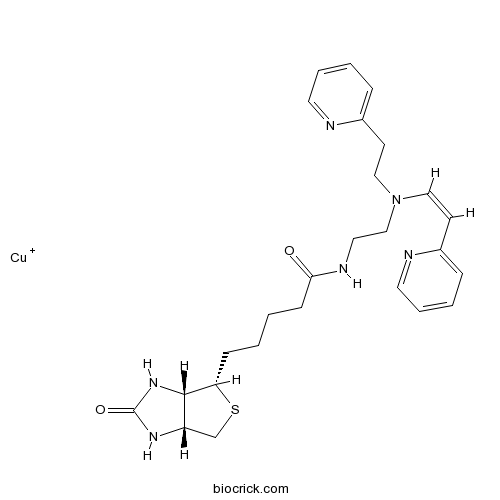
-
BCC1854
PF-543
PF-543 (Sphingosine Kinase 1 Inhibitor II) is a potent, selective, reversible and sphingosine-competitive SPHK1 inhibitor with an IC50 of 2 nM and a Ki of 3.6 nM. PF-543 is >100-fold selectivity for SPHK1 over SPHK2. PF-543 is an effective potent inhibitor of sphingosine 1-phosphate (S1P) formation in whole blood with an IC50 of 26.7 nM. PF-543 induces apoptosis, necrosis, and autophagy.

-
BCC5799
GR 94800

-
BCC5763
Galanin (2-29) (rat)
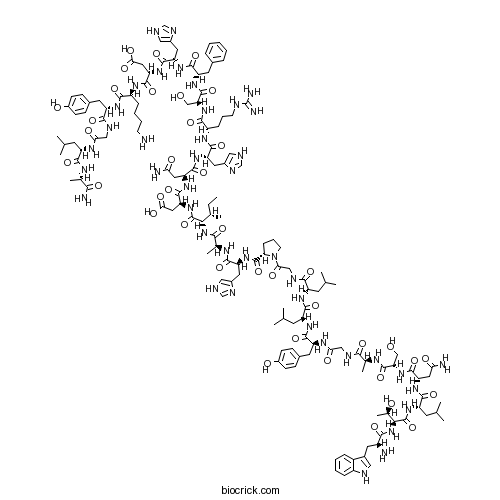
-
BCC6994
SDZ SER 082 fumarate
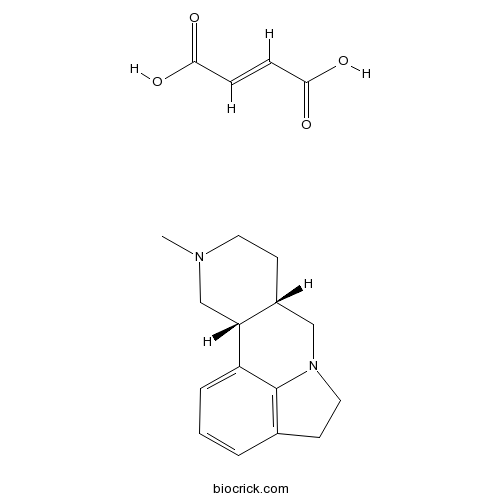
-
BCC1568
Exendin-4
Exendin-4 (Exenatide), a 39 amino acid peptide, is a long-acting glucagon-like peptide-1 receptor agonist with an IC50 of 3.22 nM.

-
BCC5934
BIM 189
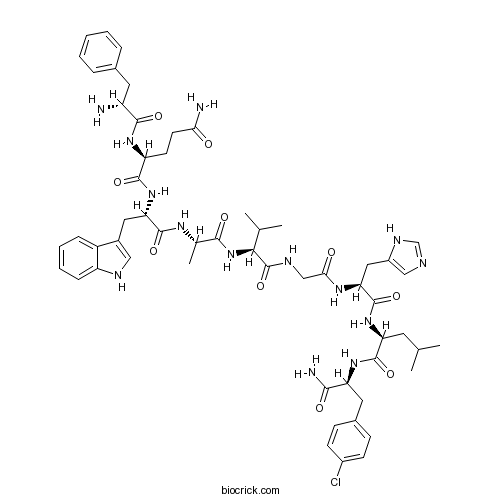
-
BCC6337
CYM 50769

-
BCC5733
FR 139317
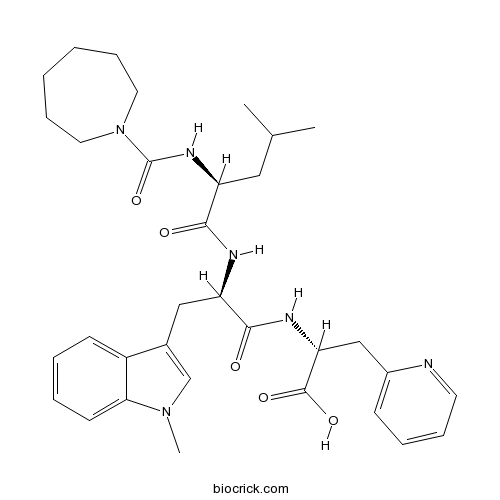
-
BCC5728
BQ-3020
Selective ETB agonist

-
BCC1929
SB-408124 Hydrochloride
SB-408124 Hydrochloride is a non-peptide antagonist for OX1 receptor with Ki of 57 nM and 27 nM in both whole cell and membrane, respectively; exhibits 50-fold selectivity over OX2 receptor.
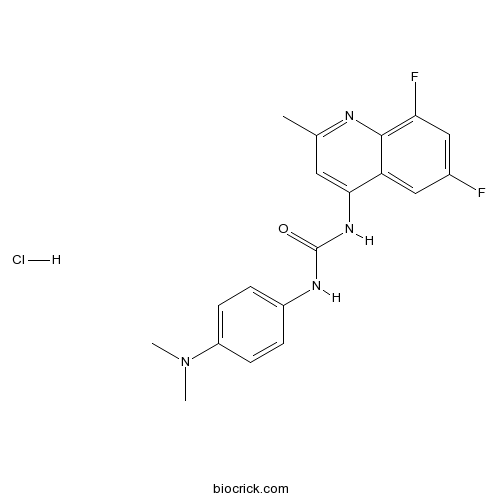
-
BCC7813
WAY 267464 dihydrochloride

-
BCC6877
RS 56812 hydrochloride
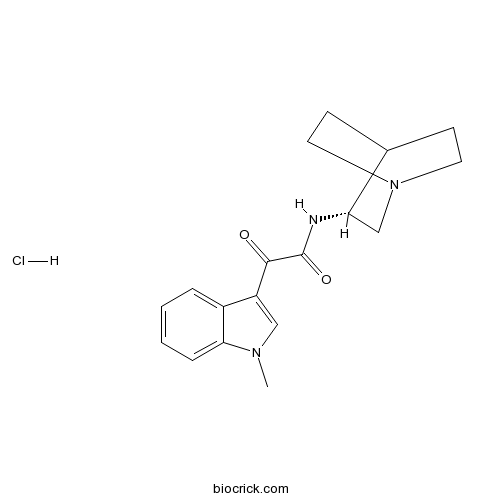
-
BCC7611
PACAP 6-38
PACAP (6-38), human, ovine, rat is a potent PACAP receptor antagonist with IC50s of 30, 600, and 40 nM for PACAP type I receptor, PACAP type II receptor VIP1, and PACAP type II receptor VIP2, respectively.

-
BCC5751
SB 200646 hydrochloride
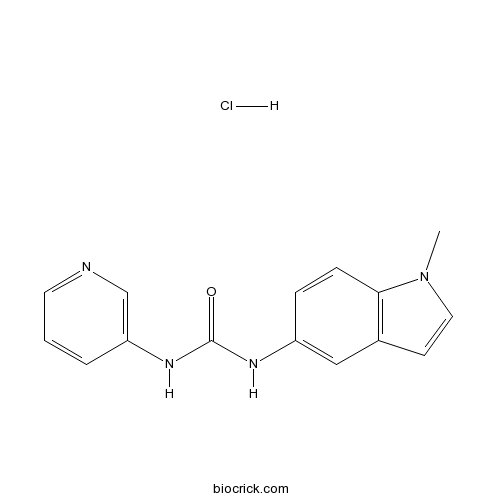
-
BCC7686
M40
M40 is a potent, non-selective galanin receptor antagonist.
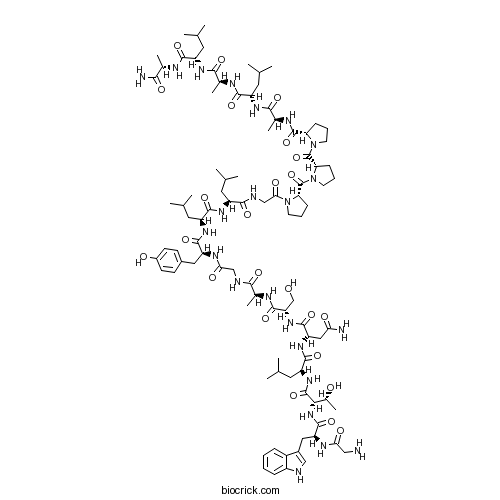
-
BCC4658
Eprosartan Mesylate
Eprosartan mesylate (SKF-108566J) is a nonpeptide angiotensin II receptor antagonist with IC50 of 9.2 and 3.9 nM in rat and human adrenal cortical membranes, respectively.

-
BCC5730
IRL-1038

-
BCC7019
GR 113808
GR 113808 is a potent and highly selective 5-HT4 receptor antagonist (pKb= 8.8). GR 113808 shows 300-fold selectivity over 5-HT1A, 5-HT1B, 5-HT2A, 5-HT2C and 5-HT3 receptors.
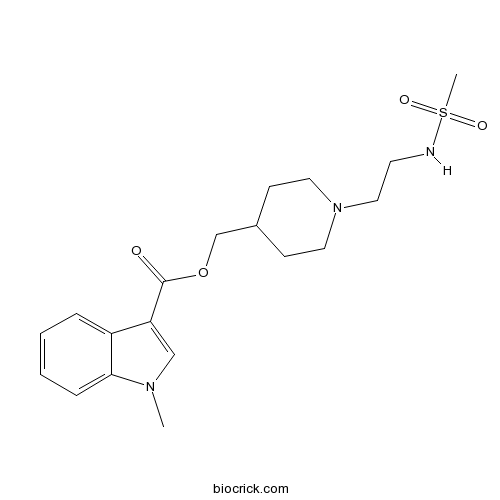
-
BCC1819
Olmesartan
Olmesartan (RNH-6270) is an angiotensin II receptor (AT1R) antagonist used to treat high blood pressure.

-
BCC6678
4F 4PP oxalate

-
BCC7437
L-703,664 succinate
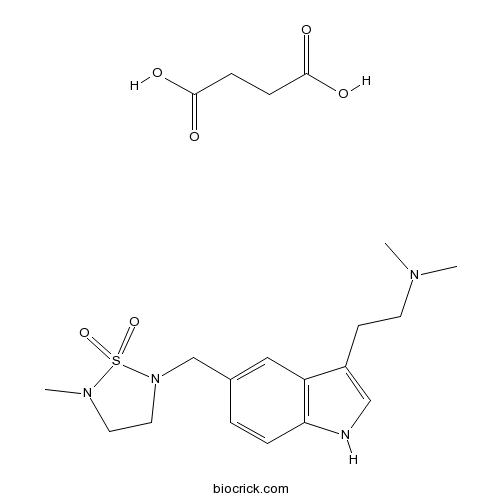
-
BCC7386
MRS 2693 trisodium salt

-
BCC7052
YM 022
YM022 is a highly potent, selective and orally active gastrin/cholecystokinin (CCK)-B receptor (CCK-BR) antagonist. YM022 shows the Ki values of 68 pM and 63 nM for CCK-B and CCK-A receptor, respectively. YM022 can inhibit gastrin-induced gastric acid secretion and histidine decarboxylase activation in vivo.

-
BCC4347
Dexmedetomidine HCl
Dexmedetomidine Hydrochloride is an agonist of adrenergic alpha-2 receptor, which is used in veterinary medicine for its analgesic and sedative properties.

-
BCC7305
L-692,585

-
BCC5685
MRS 2179 tetrasodium salt
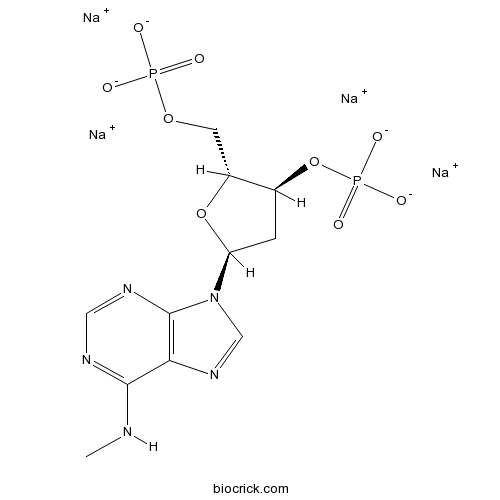
-
BCC6004
AR-C 66096 tetrasodium salt
Potent and selective P2Y12 antagonist
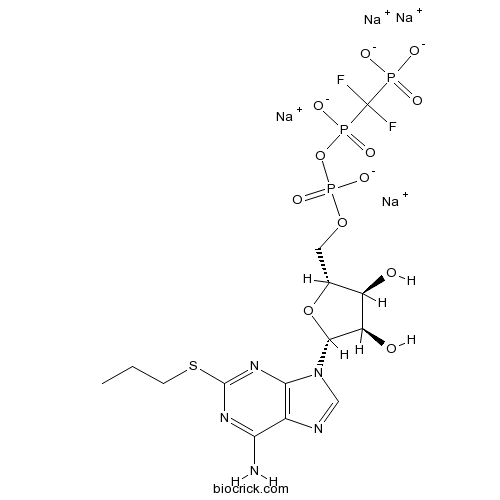
-
BCC7575
2-Chloroadenosine
2-Chloroadenosine, a stable adenosine analogue, protects against long term development of ischaemic cell loss in the rat hippocampus. 2-Chloroadenosine is an apparent competitive inhibitor of uridine influx (apparent Ki=33 μM) and high-affinity nitrobenzylthioinosine binding (apparent Ki=0.18 mM). 2-Chloroadenosine is a transported permeant for the nucleoside transporter in human erythrocytes.
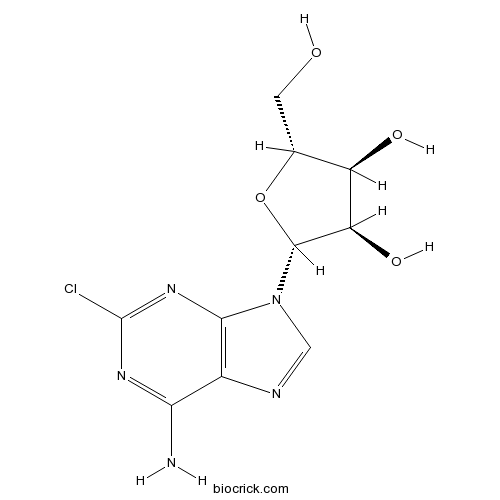
-
BCC5941
SC 51322

-
BCC7773
SC 51089

-
BCC7763
SR 48692
Meclinertant (SR 48692) is a potent, selective, nonpeptide and orally active neurotensin receptor 1 (NTS1) antagonist. In human colon carcinoma (HT-29) cells, Meclinertant competitively antagonizes neurotensin-induced intracellular Ca2+ mobilization with a pA2 values of 8.13. Meclinertant has anxiolytic, anti-addictive and memory-impairing effects.

-
BCC7536
1-Methylpsilocin

-
BCC7180
SR 2640 hydrochloride

-
BCC5734
ZD 7155 hydrochloride
ZD 7155 hydrochloride is an angiotensin II receptor type 1 (AT1 receptor) antagonist.
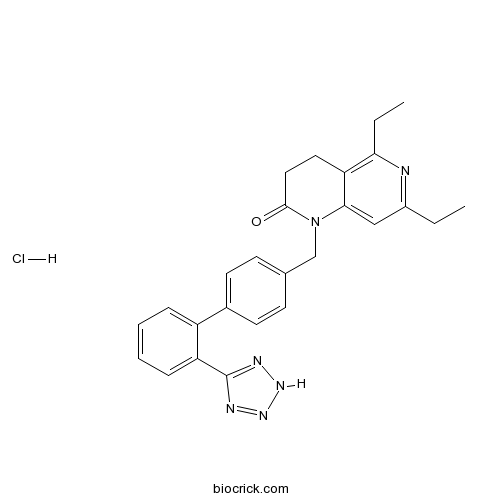
-
BCC5562
K-Ras(G12C) inhibitor 12
K-Ras(G12C) inhibitor 12 is a K-Ras(G12C) inhibitor, the half-maximum effective concentration (EC50) for K-Ras(G12C) inhibitor 12 in H1792 cells is 0.32 μM.

-
BCC6248
TT 232
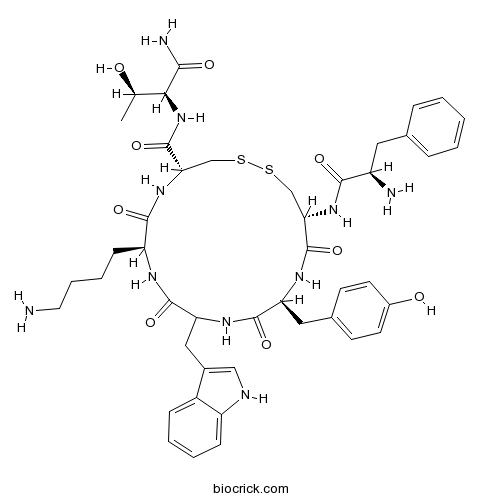
-
BCC5014
Azilsartan
Azilsartan(TAK-536) is a specific and potent angiotensin II type 1 receptor antagonist with IC50 of 2.6 nM.

-
BCC5772
LY 288513

-
BCC4640
Bosentan
Bosentan is a competitive and dual antagonist of endothelin-1 (ET) for the ETA and ETB receptors with Ki of 4.7 nM and 95 nM in human SMC, respectively.

-
BCC7640
8-(3-Chlorostyryl)caffeine

-
BCC7393
L-161,982
L-161982 is a selective EP4 receptor antagonist. L-161982 completely blocks PGE2-induced ERK phosphorylation and cell proliferation of HCA-7 cells. L-161982 alleviates collagen-induced arthritis in mice.
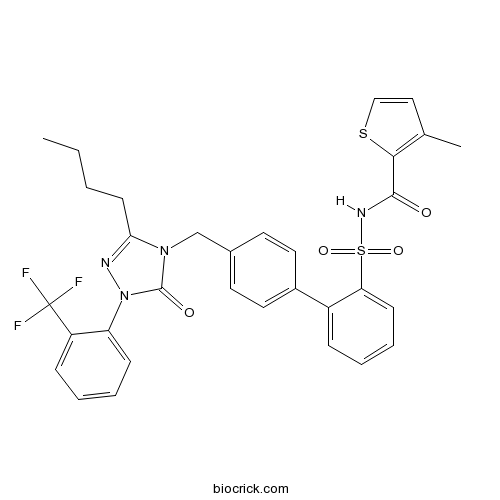
-
BCC4304
Siramesine
Siramesine(Lu 28-179) is a selective sigma-2 receptor agonist, which has been shown to trigger cell death of cancer cells and to exhibit a potent anticancer activity in vivo.
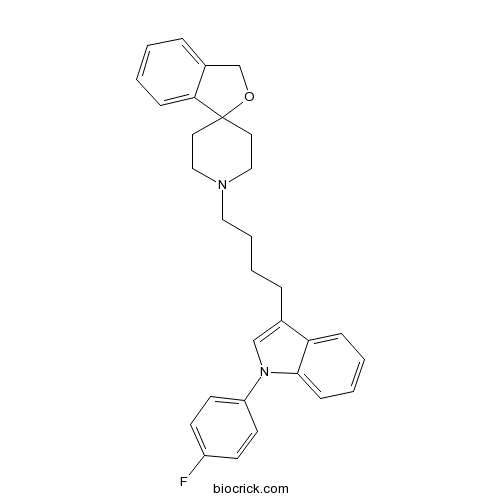
-
BCC6048
GRK2i

-
BCC7081
GR 127935 hydrochloride
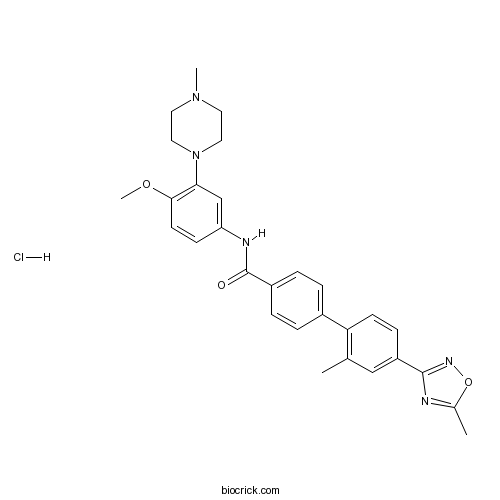
-
BCC5752
SB 204070

-
BCC4350
Ivabradine HCl
Ivabradine hydrochloride is an orally bioavailable, hyperpolarization-activated, cyclic nucleotide-gated (HCN) channel blocker.

-
BCC7573
NE 100 hydrochloride
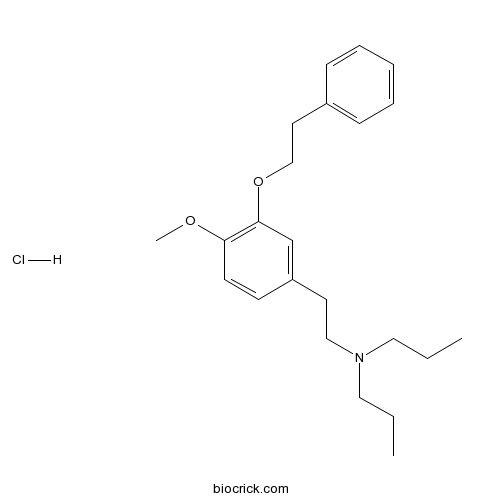
-
BCC4088
AHU-377(Sacubitril)
Sacubitril (AHU-377) is a potent NEP inhibitor with an IC50 of 5 nM. Sacubitril (AHU-377) is a component of the heart failure medicine LCZ696.
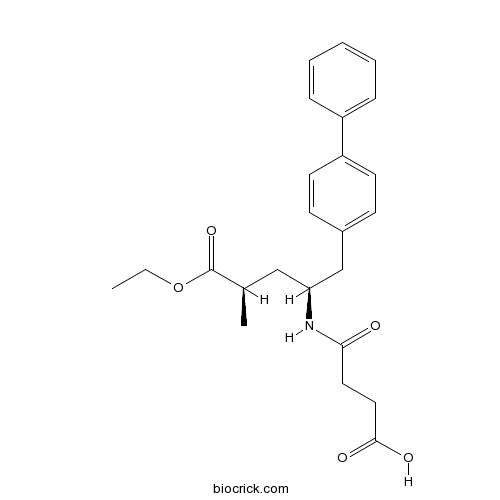
-
BCC6767
RS 23597-190 hydrochloride

-
BCC6741
2-MPMDQ
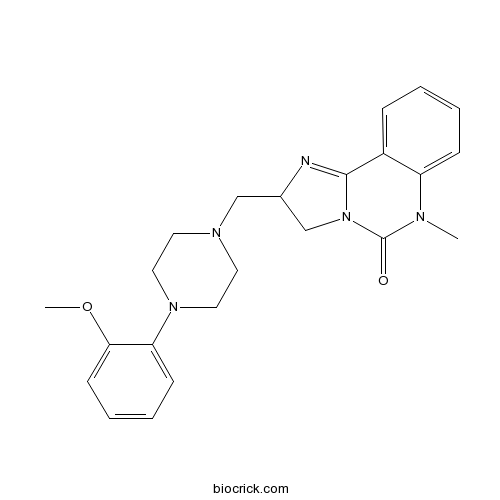
-
BCC5824
BIM 23056
sst receptor ligand

-
BCC6727
Quipazine dimaleate
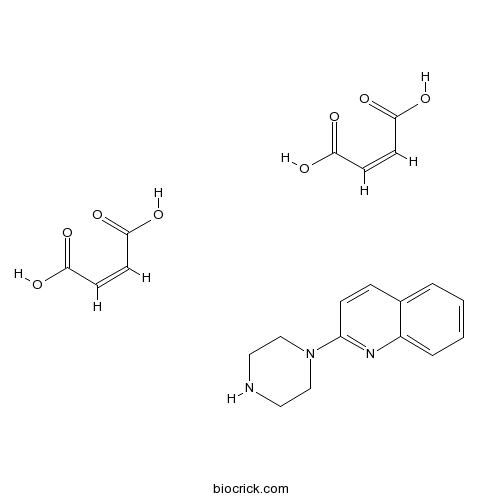
-
BCC7324
SR 49059
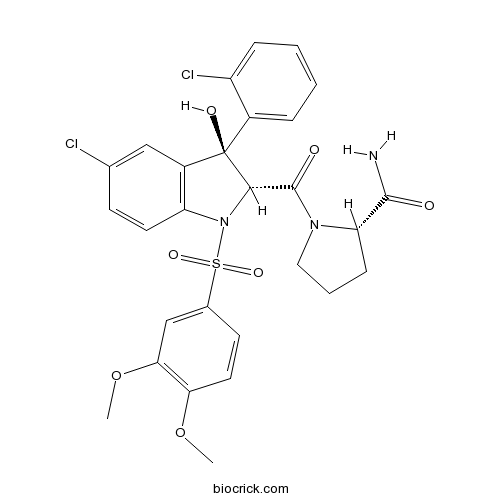
-
BCC7514
MRS 2690
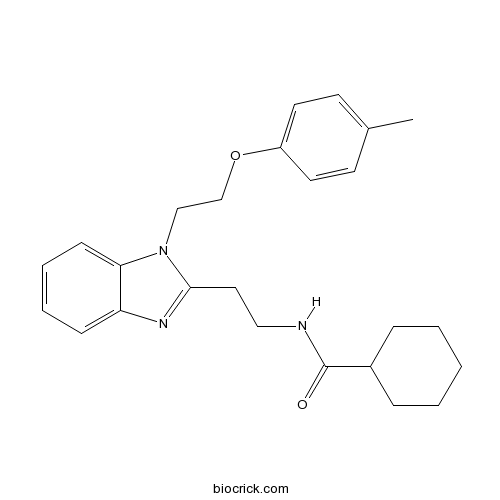
-
BCC5096
Tolvaptan
Tolvaptan is a selective, competitive arginine vasopressin receptor 2 antagonist with an IC50 of 1.28μM for the inhibition of AVP-induced platelet aggregation.
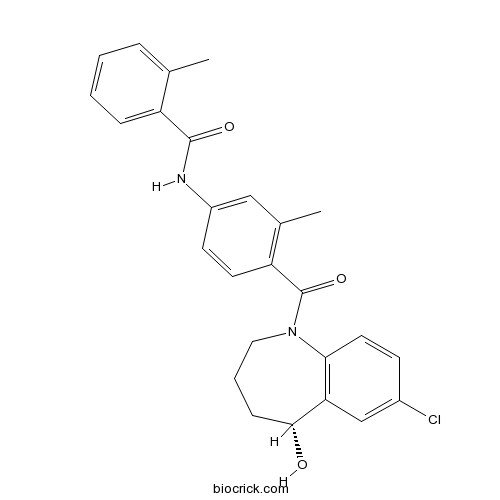
-
BCC7091
CL 316243 disodium salt

-
BCC7774
CP 135807

-
BCC4680
Montelukast Sodium
Montelukast (sodium) (MK0476) is a potent, selective CysLT1 receptor antagonist.

-
BCC6018
AC 187
Potent and selective amylin receptor antagonist

-
BCC6748
2-Phenylmelatonin

-
BCC7336
A 80426 mesylate

-
BCC7035
SB 204741
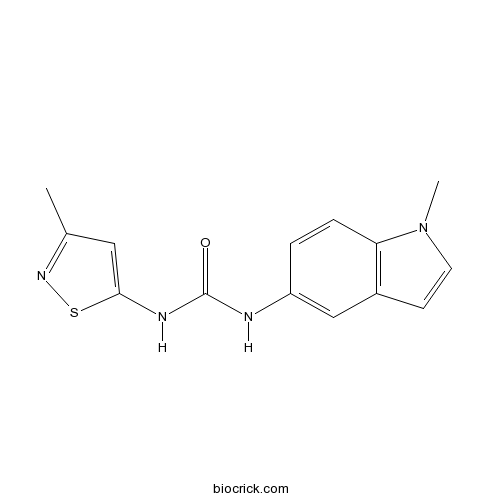
-
BCC4332
Nebivolol
Nebivolol hydrochloride selectively inhibits β1- adrenergic receptor with IC50 of 0.8 nM.

-
BCC7237
PSB 1115
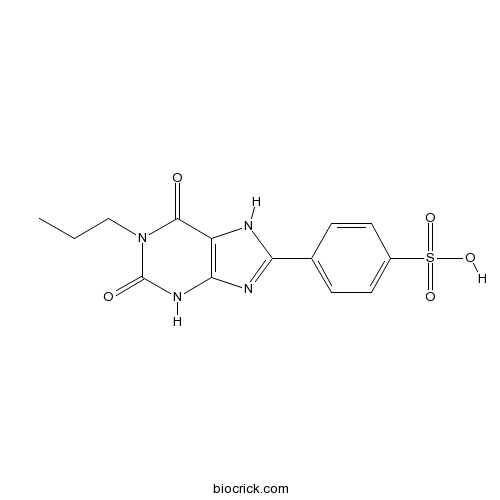
-
BCC7068
BMY 45778
Non-prostanoid prostacyclin IP receptor partial agonist
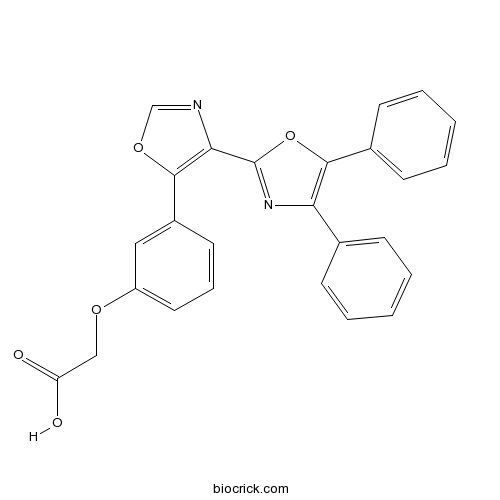
-
BCC7690
[D-Trp34]-Neuropeptide Y
![[D-Trp34]-Neuropeptide Y](/media/images/struct/BCC7690.png)
-
BCC8025
NBOH-2C-CN hydrochloride

-
BCC6359
ANQ 11125
Selective motilin receptor antagonist
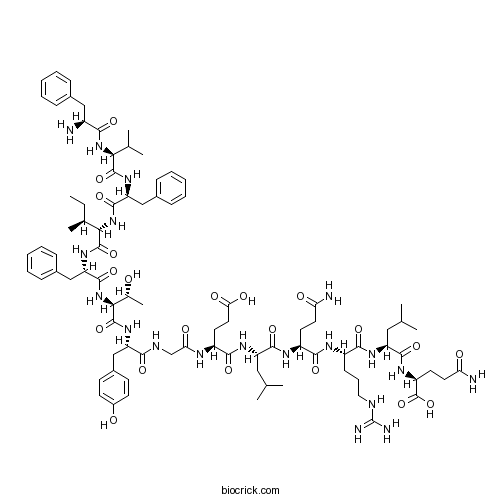
-
BCC7429
PD 144418 oxalate
PD 144418 is a highly affinity, potent and selective sigma 1 (σ1) receptor ligand (Ki values of 0.08 nM and 1377 nM for σ1 and σ2 respectively), devoid of any significant affinity for other receptors, ion channels and enzymes. PD 144418 shows potential antipsychotic activity.
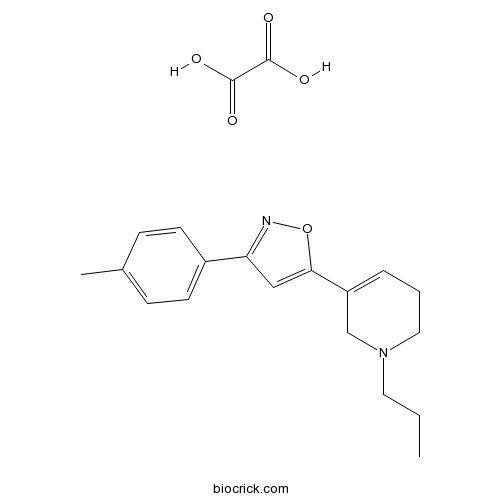
-
BCC7576
BAY-u 9773
Dual CysLT1 and CysLT2 antagonist
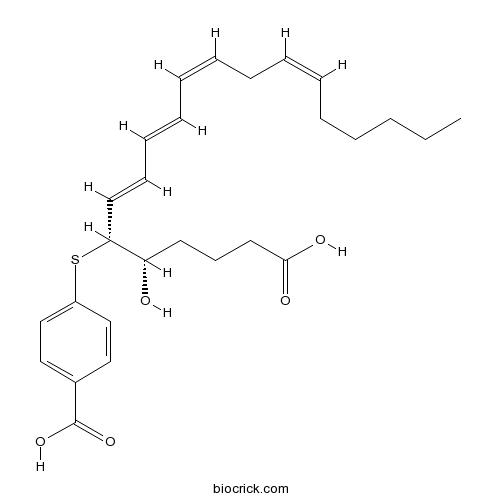
-
BCC6784
N-[2-(Piperidinylamino)ethyl]-4-iodobenzamide
![N-[2-(Piperidinylamino)ethyl]-4-iodobenzamide](/media/images/struct/BCC6784.png)
-
BCC6780
SM-21 maleate
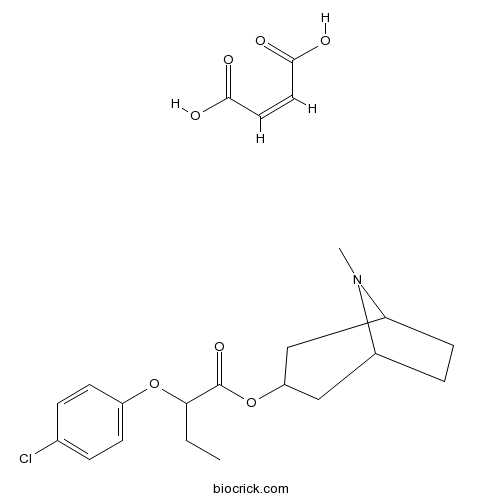
-
BCC6771
2-[1-(4-Piperonyl)piperazinyl]benzothiazole
![2-[1-(4-Piperonyl)piperazinyl]benzothiazole](/media/images/struct/BCC6771.png)
-
BCC4447
Plerixafor 8HCl (AMD3100 8HCl)
Plerixafor octahydrochloride (AMD3100 octahydrochloride) is a selective CXCR4 antagonist with an IC50 of 44 nM.

-
BCC4948
Bimatoprost
Bimatoprost is a prostaglandin analog used topically (as eye drops) to control the progression of glaucoma and in the management of ocular hypertension.
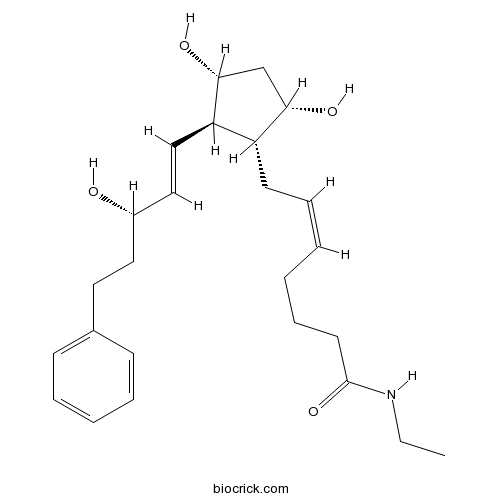
-
BCC3798
Istradefylline (KW-6002)
Istradefylline is a very potent, selective and orally active adenosine A2A receptor antagonist with Ki of 2.2 nM in experimental models of Parkinson's disease.
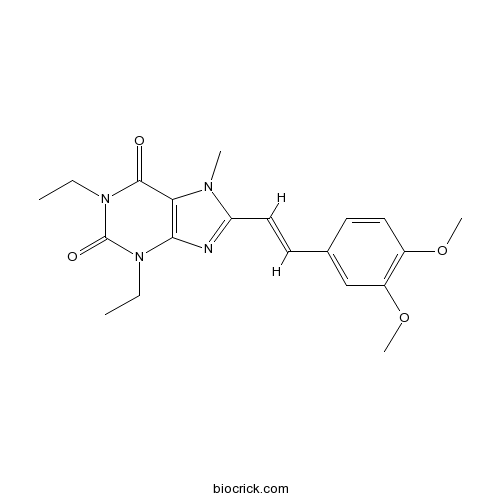
-
BCC6779
PG-9 maleate
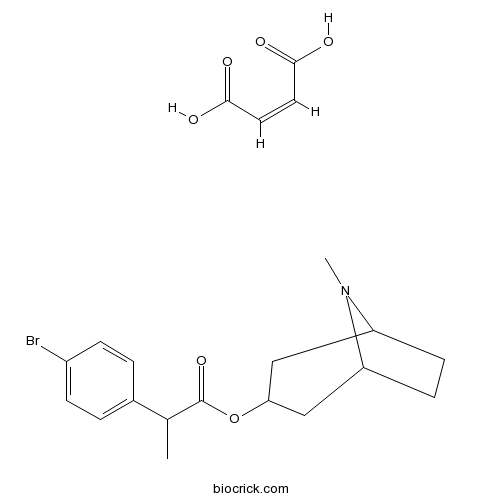
-
BCC6777
4-IBP
4-IBP is a selective σ1 agonist with a high level of affinity for the σ1 receptor (Ki = 1.7 nM) and a moderate affinity for the σ2 receptor (Ki = 25.2 nM) .
